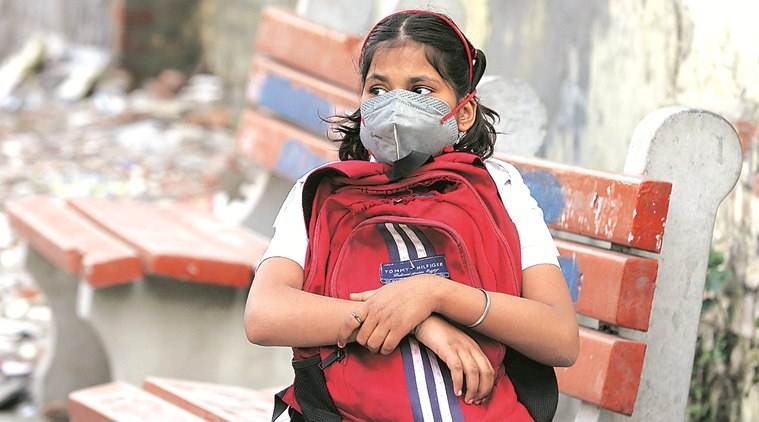 Most of the students of government schools in the state belong to poor families, including Dalit and backward communities.
Most of the students of government schools in the state belong to poor families, including Dalit and backward communities.
IN AN attempt to impart lessons to the students of government schools during the pandemic, the Haryana government has introduced a three-tier monitoring system to check whether the students actually watch lectures telecast through the education channels of Doordarshan.
The government decided to impart education through Doordarshan after it came to know that the online classes were not possible for the students of government schools. “Through an extensive exercise of data collection, we came to know that only 3 per cent households whose kids go to the government schools have laptops/computers with internet connection, while 20 per cent households have mobile phones. With the initiation of the Unlock process, the parents take their mobile phones with them. In these circumstances, online education is not possible for the students of government schools,” said an official of the state Education Department.
In this scenario, the Education Department decided to impart lessons through two education channels of Doordarshan. For this, the Chief Minister Manohar Lal Khattar launched the CM ‘Distance Education Programme’ on April 15. “The concept is similar to the Gyan Darshan channel run by the NCERT. We have got a slot of four hours on Doordarshan’s education channels. The lectures of these channels are telecast on the cable networks and Reliance Jio’s TV channel on mobile phones. The teachers as well students are supposed to watch the sessions. Later, the teachers give homework to students through WhatsApp. Those students, who don’t have mobile phones, have been associated with those who have such phones,” says the official. The concept is beneficial for the students of private schools too as the lectures cover the syllabus of Haryana School Education Board, CBSE and other boards too.
Most of the students of government schools in the state belong to poor families, including Dalit and backward communities. In these circumstances, it has become a challenge for the government to impart lessons to them without formal schooling.
According to officials, almost half of the 52 lakh school students study in government schools in Haryana. Out of total 24,000 schools in the state, nearly 14,500 are government schools, while the rest of them are private schools.
Director of Primary School Education, Pardeep Dagar told The Indian Express that some of the lectures have been taken from the NCERT while the state had also added material for some lectures.
But real challenge is proper implementation of the project.
So, the government has asked each of the headmasters or principals of all 14,000 schools to call at least 20 students daily. “The headmasters have been asked to upload the details of those students, whom they called, on a government-run portal. To check whether the headmasters called the students, the government has further appointed 2,000 observers who call the students randomly. In the third phase, senior officers also make some phone calls. With this method, we reach 2.8 lakh students daily. Himachal Pradesh and Uttarakhand too have sought details of this model,” said an official.
However, the concept doesn’t appear to be getting desired results from the field.
A labour activist, Rajesh Chaubara, from Chaubara village of Fatehabad district insists that the current model of education being imparted to the students can’t replace the traditional way of teaching in schools. “The government must open the schools. If the things continue in the current format, then this academic year will prove unproductive. The average student hardly attends such sessions. They just copy homework from any intelligent student and WhatsApp the same to the teacher just to complete the formalities,” said Chaubara, whose two children study at a government school.
“Whenever we give the mobile phones to the students, they start playing games on it. It has adversely affected their health too. Further, the students can learn properly only from the interaction with the teachers in the classes. The education through television is one way of communication. There is an option of telephone calls to the teachers to ask the queries, but our children are not so advanced who can take such initiatives. Moreover, it’s difficult to explain things to the students on phones because they have habit of learning on black boards,” he added.
A resident of Sudana village in Rohtak district, Manoj Kumar said that students face problems because of interrupted electricity supply. A senior officer admitted that there are some shortcomings in the system like non-availability of smart phones and television sets to all students. A teacher from Yamunanagar claimed about 50 per cent of students attend such lectures on TV sets or mobile phones.
Wazir Singh, spokesperson of Haryana Vidyalaya Adhyapak Sangh, a body of government school teachers, is also not impressed with the current model of education meant to impart the education to students of government schools. “The government should initially explore the possibility of opening the schools for higher classes only after reviewing the situation of coronavirus in coming days. The government may also reduce the syllabus after consulting the same with the educationists, student unions and bodies of parents. If these formulas don’t work, then the government may also declare this academic session as ‘zero year’,” said Singh.